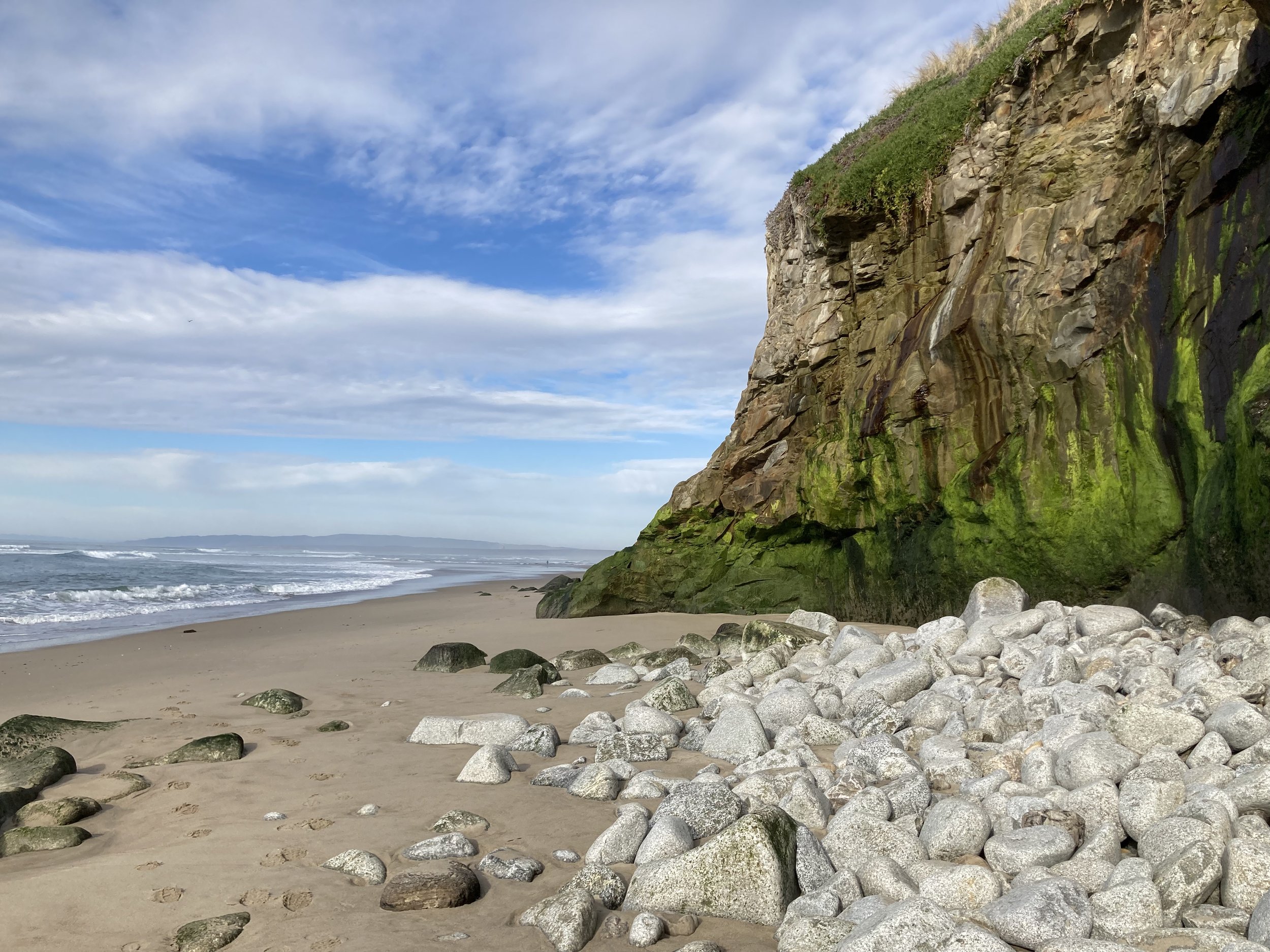Jalama has been a welcoming refuge for many different cultures and groups of people throughout the years. I fondly remember my first Jalama Beach encounter was with friends who knew of the place. It was a Sunday afternoon and we embarked on a trip to the ‘beach.’ Instead of heading to a beach I was familiar with, we traveled a long and windy road that seemed to take us no where until the coastline met us. It was then I caught my first glimpse of this beautiful place. I recall only one other car in the ‘parking lot’ when we arrived and the parking lot was really just an area made of compressed sand and dirt, cleared to accommodate vehicles. There was no asphalt or concrete roadway to be seen. There were also no cabins or RV hook-up sites and no trees really other than a few stubby ones that I thought of as cypress trees. There were no showers or running water, and If there was a store, it was closed and just a small nondescript structure. What captured my heart though, was the untamed beauty of the beach. It must have been low tide (I was newly a teenager and how tides worked was not something I was even remotely familiar with) and we walked north under overcast skies where there were tide pools in abundance. I loved exploring each one as I scrabbled over the exposed shale, stood in admiration of the cliffs that bordered the land side of the beach and watched as surf birds flew overhead and played along the shore pound. It was a short visit, but I digress as there were so many others that had experienced this area before I had the opportunity and it is their story I wish to share here.
The first known inhabitants of Jalama lived in a Chumash village called Shilimaqstush which straddled the creek. They were known for their blades and knives made of chert which was in abundance. Arrowheads and beads can still be found as the sands shift and storms change the landscape of the surrounding hill side. It is illegal, however, to remove these from the beach. By 1812 few villagers remained as many had succumbed to European diseases brought by the Spanish in the late 1700’s or had relocated to neighboring La Purisma Mission. With most of the indigenous people gone, it was about this time the Spanish began referring to the area as Jalama.
In 1833 the Mexico Congress voted to sell the California missions to businessmen and that lead to several land transfers until the Atlantic Richfield Oil Company acquired it. In 1942, RM Adam, Lompoc Record publisher and Lompoc’s representative on the Santa Barbara County Board of Supervisors, enters into the Jalama story. With Ocean Park becoming a part of Camp Cooke and looking to remain that way for the foreseeable future, Mr. Adam began looking for an alternative beach for Lompoc residents to call their own. Despite the fact Jalama Beach was private property it was frequently used for camping and recreation by the general public. It was also the closest accessible beach to Lompoc, thus Mr. Adam began negotiating with the Atlantic Richfield Oil Company, requesting the land be donated to Santa Barbara County. Negotiations for free land are never easy and it wasn’t until a change in tactics and Fred Bixby joining Mr. Adam in his efforts, that the Atlantic Richfield Oil Company deeded 23.5 acres to Santa Barbara County in May of 1943.
Improvements happened overtime as asphalt was laid, running water, flush toilets and showers installed. Campgrounds were improved, hookups were added and the most recent addition are the cabins. Many of the trees still standing were planted in the 1980’s but the myoporum of the past that sheltered areas of the park have been removed. The Jalama Beach Store with its famous Jalama Beach burger, was taken over in 1979 by the Eittreim family and has flourished under their guidance becoming as famous if not more so than the beach. Many people take the drive out just to sit and enjoy a delicious Jalama burger while listening to the waves and taking in the sweeping beach views.
For me, Jalama is the place to escape the demands of the clock and society and return to myself as I enjoy the beauty nature has bestowed, smell the salt air and listen to the waves and the breeze as they play. For others it is a place to fish, to surf, to windsurf (I love seeing the brightly colored sails decorate the skyline!) to beach comb, to camp, to spend time with family and friends or to enjoy a famous burger. Jalama has many different faces and so many different meanings to those that enjoy her refuge. What does she mean to you?
I hope you enjoyed learning a bit about the history of this treasure as much as I did. Special thanks to John McReynolds and his exhaustive research which was published in his book, Seasons of Jalama. There is so much detail and history recorded in his words of which I have shared just a speck.
Much love to everyone! Stay safe. Stay home. Stay well. Share a smile. Remember, this too will pass.
Seasons of Jalama by John McReynolds
https://www.countyofsb.org/parks/jalama.sbc
https://explorelompoc.com/blog/complete-guide-to-jalama-beach/


